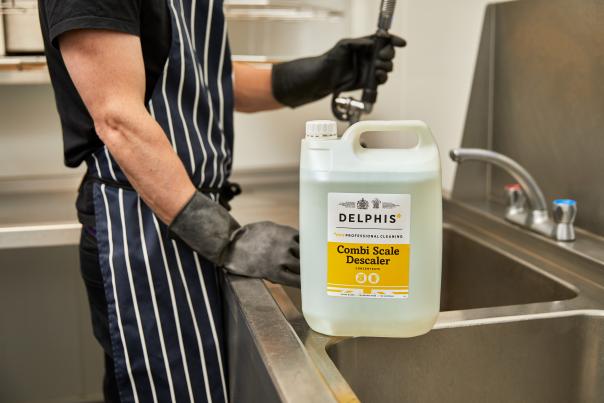
As someone who is deeply invested in sustainable practices within the foodservice industry, I am acutely aware of the challenges that public sector catering establishments face in maintaining clean and hygienic kitchen and dining areas.
The demanding nature of these environments, including schools, hospitals, and care homes, necessitates innovative and of course, cost-effective, solutions to address the cleaning issues prevalent in these spaces.
And there can be no compromise. Catering requires complete hygiene and cleanliness across these spaces. It’s important to be aware that no one needs to use toxic materials to achieve utopia in this respect.
This year we have experienced some of the hottest days the world has ever seen with three records being set, and reports confirming that the sudden rise in global temperatures is unequivocally down to human influence on climate change.
Never has it been more important to encourage operators to do more. We all can help pave the way towards a healthier, more environmentally responsible future for the sector. Here, in our business, we advocate partnership working.
For good reason – none of us are alone in the fight to battle climate change and reduce emissions and no one needs to bear the burden on their own. Put simply, working together as an industry, we are stronger.
The majority of public sector catering establishments are bustling hubs that experience high footfall throughout the day. As a result, kitchens and dining areas are prone to accumulating dirt, grease, and food particles at an alarming rate.
Despite the critical role they play, sites often struggle with limited resources and unpredictable labour shortages. And it’s a growing concern that the traditional cleaning agents commonly used in these kitchens and dining rooms contain harsh chemicals such as parabens, sulphates, and quats [quaternary ammonium compounds] which not only pose risks to the long-term health of staff using them (and consumers) but also contribute to environmental degradation.
Switching to eco-friendly, biodegradable cleaning agents significantly reduces the exposure of staff and consumers to harmful chemicals. Prioritising the health and wellbeing of individuals within these environments not only safeguards their interest but also ensures a more productive and motivated workforce. It’s the right way to clean.
What to watch out for when assessing products…
There are markers to watch for when assessing products and how these might impact on the health of staff and consumers, as well the environment.
Key warning signs are products which contain phosphates, chlorine, ammonia, bleach, EDTAs and APES. And it’s important to understand what each of them does:
- Phosphates and Phosphonates: Traditional detergents are a source of phosphorous in waterways which in turn causes over-fertilisation of aquatic flora like algae. When these floras die, they decay and use up oxygen, causing the death of fish, invertebrates, and aquatic organisms.
- EDTA: This is a binding agent common in cleaning products. EDTA does not break down fully in the natural environment, making it a persistent pollutant. It’s also potentially harmful to people and animals causing problems from nausea to kidney damage.
- APES: These hormone-mimicking compounds are found in around 55% of commercial cleaning products. When APEs escape into the environment, they break down into chemicals called nonylphenols. Nonylphenols contaminate the food chain and are lethal to fish at low concentrations and can affect human and animal development.
- VOCs: These organic chemical compounds are able to evaporate under normal indoor conditions, causing indoor air pollution which can adversely impact the health of humans and animals – particularly those with underlying conditions such as asthma.
- Ammonia: Can cause severe burns and respiratory issues if it comes into contact with skin or is ingested.
- Chlorine: There was a commonly held belief that chlorine can make a good disinfectant, it is very reactive and can be corrosive. It can also give off fumes and gases which are hazardous to health.
There are some straightforward actionable steps that can be taken, and remember that small changes can have significant positive impacts.
Firstly, evaluate the products and services that are being used in the kitchen and dining room – whether cleaning services are managed in-house, or outsourced to professional facilities/cleaning companies.
And swap those ‘conventional’ cleaning agents ladened with harmful chemicals for eco-friendly alternatives. Look for bio-degradable, non-toxic, and plant-based cleaning solutions that have certified eco-labels. These products can be just as powerful in removing greases, grime, and stains but are much kinder to the planet.
To achieve best practice, training is vitally important to gain an understanding of products and the potential harm they can cause to users and consumers.
Alongside this comes regular refresher courses to support and motivate the team. By ensuring that staff observe and implement eco-friendly behaviours, it can create a cleaner and healthier environment for all.
By taking care of ourselves and by working together, we are also taking care of our environment.